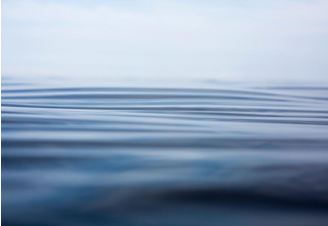“[The Guardian of Guano] would think like, looked like, and kind of behaved like a bird”
Originally, I was kind of obsessed with the very traditional National Geographic documentaries where you have a narrator and you’re seeing some sort of wonderful natural phenomenon. I wanted to shoot a documentary like that in Peru so I went to the Punta San Juan Reserve, which is the largest colony of Humboldt penguins in Peru. Those are these desert penguins, which is not the image we typically associate with penguins!
So, I went there with that idea, but when I arrived there was already a man from the BBC shooting a film about the desert penguins! First, I was like wow I can learn so much!… but then as a producer I thought why am I going to shoot a film on desert penguins when this guy already started and has all this equipment that is so much better than mine? why don’t I just do something else that’s going to that work better?
Then I spent a couple days in the reserve, which is basically an inlet, like a sliver of land in the water where you’re sitting on top of a load of bird poop (guano). It smells horrible and there’s so much wind, but it’s beautiful with the seabirds, and its full of a sea Lions. Then I started hanging out with the island guard Ricardo Moreno, and he would show me like ‘oh here’s where the penguins hang out’, or ‘this is where you can get the best shot of the sea lions’.
This reserve is under the protection of the Ministry of Agriculture, so in the same way you would have a park ranger, he was there guarding the island because around these areas the people like to hunt these birds, eat them, or go into the reserve and fish, because obviously since it’s a reserve there’s going to be a lot of fish that haven’t been depleted. So he takes care of the birds and then he also reports back on the population and whether or not its growing.
He came from the mountains and he first saw the ocean as a guano collector because there’s not enough population native to the coastal areas to do the job, and at that time there was a lot of terrorism in the mountains. So, he came down as a as a guano collector and then eventually there was an opening as the guard. A couple of years back he got an award for being the guard with the longest service, but now he’s retired.
As I started hanging out with him, I became really fascinated by this man. He would think like, looked like, and kind of behaved like a bird, and I was just very drawn to the fact that he lived there all year on his own just taking care of these birds and kind of like having this really intimate relationship with them.
At first, I thought that the birds don’t have very exciting lives up here… you would think that they just sit and stare, but they’re like looking everywhere in all directions, and are aware of every sound. The first couple of times I would see him go and count the birds I would think it’s incredibly boring, as this guy’s just sitting there! And then, as I kept going I began to think it was an incredibly fascinating activity because he’s looking at one thing then you see one bird fly down, and then you can hear the ocean, or even hear another one, and I think that he adopted these very bird-like conditions where you’re kind of looking and being aware of your environment and feeling very frail… birds are very frail and they’re aware of it, especially when they’re not flying because obviously if you’re on land we have the advantage but in the air, they have the advantage.
One of his tasks there was that twice a week, he would collect the vomit after the birds regurgitated and then he would see ‘oh so this bird has eaten an anchovy, this one has eaten another fish or whatnot’. What was really interesting was that he saw that the birds were eating less and less anchovy because there’s not that many available anymore. And that’s a direct reflection of the depletion of stocks from overfishing, even if it goes on many kilometres away it’s affecting the birds that are in this area too.
Also, you’re always sitting and you’re walking on top of bird poop, so he was like knee deep in bird poop and guts and he was just fascinated! And I was fascinated by the way he talked about birds! I kept asking myself how this man could just have his life revolve around these birds, and he’s here all alone, his families in the mountains he never sees them…then I realised that to him the birds were his family and he I think he identified a lot with the birds, because they were also very solitary.
Watch Guardian of Guano:
Ana Elisa Sotelo Van Oordt is represented by BLOC ART


